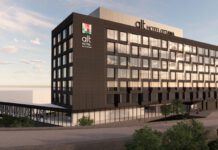The beverage market continues to be influenced by shifts in consumer expectations — including an increased focus on health and wellness, customization, premium products, convenience and innovation — giving rise to a new wave of industry trends.
“Beverage growth has outpaced that of foodservice within the past few years thanks to innovative options such as nitro coffee, plant-based milks and other alternative beverages entering this space,” David Henkes, principal at Technomic, noted in the company’s new Away-from-Home Beverage Study released in August.
“[These trends are pushed by] a drive for health-and-wellness-based products from brands that are local, relatable and trustworthy,” says Karen McEachern, technical manager, Product and Process Innovation, Consulting & Technical Services at Guelph, Ont.-based NSF International (Canada), adding customers want products that provide an experience that moves them.
The following are among the top beverage trends to watch in 2020.
Functional Benefits
The recently released Technomic’s Take: 2020 Canadian Trends report highlights functional drinks as a key trend the industry will be embracing this year, noting “As consumers’ definitions of health become more holistic, operators are shifting their focus from highlighting nutrient-rich, remedial ingredients (such as those that help with digestion) to functional enhancements offering physical, mental and emotional benefits, bringing health into the modern era.”
Beverages in this category incorporate ingredients such as adaptogens (herbs and some mushrooms that support the body’s natural ability to deal with stressors), medicinal mushrooms, fibre, antioxidants, MCT (medium-chain triglyceride) oil, collagen, biotin, CBD oil (despite regulations prohibiting cannabis products from making health claims in Canada, CBD has a distinct wellness halo) and other hemp/cannabis derivatives. Items featuring probiotics and prebiotics, including fermented beverages such as kombucha and kefir, are also top of mind as promotors of gut health.
“Consumers are more health conscious and believe the food they consume plays a huge part in their overall health. The adage that food is medicine is a big driver,” says McEachern.
In particular, coffee with added functional benefits is predicted to be a key trend in 2020 — think coffee fortified with CDB, MCT oil, protein or adaptogens. Beautiful, brightly coloured super-food lattes, featuring ingredients such as spirulina (blue-green algae), turmeric or butterfly pea, are another key way of incorporating this trend in foodservice.
“CBD beverages will likely play a big part in the health-and-wellness category,” McEachern adds. “As more research is done and consumers become more aware of the possible benefits of CBD, we could see a big demand in the future.”
Cold-Coffee Preparations
Cold coffee beverages — and cold brew in particular — have made their mark within the coffee segment. In fact, during its Q4 2019 conference call, Starbucks Corp. COO, group president & director, Rosalind Gates Brewer, called out cold coffee and the brand’s Nitro Cold Brew offerings as products “doing extremely well” and will continue to be a focus of the company’s ongoing beverage innovation.
“As consumers purchase more products with less sugar, no MSG and no unknown ingredients, they’re learning to appreciate the in-depth flavours of their foods,” says McEachern. “Cold-brew coffee brings a sophistication to the coffee-drinking experience and allows you to taste the natural flavours that exist within the various coffee-bean varieties.”
And, as interest in cold coffee continues to grow, so does the range of preparations available. Flash-brewed coffee (a.k.a. Japanese flash-iced coffee) — hot coffee brewed directly over ice — was identified in U.S.-based beverage-development company Imbibe’s 2019 beverage-trend predictions as an emerging trend. Sparkling iced coffees, including sparkling cold brew and espresso sodas, are also worth watching.
A driving force behind this category is the popularity of RTD (ready-to-drink) coffee beverages. According to Mordor Intelligence, the global RTD-coffee market is forecast to grow to US$12.61 billion by 2024, with 4.5-per-cent growth expected from 2019 to 2024. This growth is spurred by time-starved consumers seeking convenient products that fit their lifestyle and values.
However, this doesn’t mean in-café offerings in this category are of lesser consequence than their RTD counterparts, says McEachern, noting consumers often first make a connection with a café’s similar products before venturing into its RDT offerings.
Low and Zero ABV
This trend has been on the rise in the U.K. — home of category leaders such as Seedlip non-alcoholic spirits — and is now emerging in North America.
“Once again, this beverage category plays to the health-conscious consumer, although the growth in recent years tends to be attributed to the younger generation, who are generally between the ages of 20 and 30,” says NSF International’s McEachern. “They still want to enjoy the social experience with friends and family, but are choosing to do so with alternatives to traditional alcoholic beverages.”
McEachern also points to craft brewing as a key trend within this category. “Locally produced products are a big factor as consumers are looking for that local experiences and are eager to gain a personal connection to the brand,” she explains.
Capitalizing on this trend are brands such as Big Drop Brewing Co. — a U.K.-based craft brewery, solely dedicated to making non-alcoholic beer, which recently launched products from its award-winning lineup in Ontario. “People have always consumed non-alcoholic beer. It’s just never really been any good,” says Rob Fink, the company’s founder & CEO. “Big Drop was created when I realized the game-changing craft-beer sector had completely ignored non-alcoholic beer.”
“The trend for better quality and better taste continues and non-alcoholic beer is no exception. Non-alcoholic craft beer is pacing 30-per-cent stronger than the nearest traditional non-alcoholic beer competitor,” Fink adds. “The overall category is also growing exponentially year-over-year as consumers look for offerings that reflect their personal taste profile.”
This sentiment also extends to mocktail offerings, which are increasingly getting the craft treatment, with deeper, more complex flavours that go beyond the sweet concoctions of the past — and often drop the ill-reputed title. According to California-based Kimpton Hotels & Restaurants’ 2020 Culinary + Cocktail Trend Forecast, botanical-infused sparkling drinks are among the non-alcoholic trends bartenders are most likely to experiment with, as well as alcohol-free spirits and “up-leveled teas” with exotic fruit flavours.
And, Fink points out — similar to diners with dietary preferences or restrictions — the needs of one diner can play a significant role in determining the establishment a group frequents when going out.
Craft Alcohol
Growing interest in local and premium products is spurring growing demand that goes beyond craft beer to include craft ciders, spirits and even bitters.
“It’s no secret the shop-local trend is on the rise. This year, we rolled out new boutiques showcasing Ontario wine, craft beer and spirits to further support the Ontario industry making hundreds of incredible new products every year,” George Soleas, president & CEO of the Liquor Control Board of Ontario (LCBO), stated in the organization’s 2017-18 annual report.
Highlighting the growth of these craft products is the formation of Artisan Distillers Canada and the Canadian Craft Brewers Association (CCBA) (formed in 2017 and 2019 respectively), representing the growing ranks of craft producers. CCBA even launched the Independent Craft Seal of Authenticity in November to help consumers identify beer produced and sold by independent Canadian craft brewers.
“The growth in this category can also be attributed to a push from the consumer to be more involved in the brands they choose to support,” says McEachern. “Smaller brands are able to adapt quickly to the needs of their consumers, which in turn allows the consumer to feel heard and connects them even more with the brand.”
“Consumers today are looking for an experience and are willing to spend more on the products they support,” McEachern adds.
International Liquors
Customer’s interest in exploring an increasingly wide range of international flavours extends beyond food trends, influencing their choices when they choose to imbibe. Technomic’s recently launched Ignite platform identified “Trendy Ethnic Liquors” as an upcoming menu trend and a key way to “amp up” mixology programs. Among the products to watch, it calls out mezcal, Japanese shōchū, sake, Korean soju and Chines baijiu.
The Culinary + Cocktail Trend Forecast also highlighted international liquors as a trend to watch, with more than a third of experts polled choosing mezcal as the spirit of choice for 2020. The report also predicts 2020 will mark “the rise of alternative-grain spirits,” including baijiu, shōchū and soju.”
Technomic specifically calls out shōchū as having a two-year predicted growth of 1.4 percentage points. This distilled liquor is commonly made from sweet potato, barley or rice and is the most popular spirit in Japan. It is most often consumed on the rocks, mixed with cold or hot water or with fresh juice and — with its range of base ingredients — offers a wide range of flavour profiles.
Soju is a clear spirit traditionally made with rice but, since distilling rice was banned during the Korean War, distillers have used other grains and starches, including wheat, sweet potato and tapioca.
Like shōchū and soju, baijiu — which literally means white liquor — can be made from a variety of base ingredients, including sorghum, wheat, rice, sticky rice and corn.
Overall, innovation and variety are key to pleasing a consumer base that expects choice and personalization in all aspects of their lives. And, in the highly competitive realm of food and beverage, operators can benefit from keeping a keen eye on the values that influence consumers’ spending habits, as these have become major drivers of industry trends.
“We’re seeing a group of emerging consumers who, more than ever, want to support and build a personal connection with the local food businesses they deal with and who follow and commit to similar values,” says McEachern. “They see purchases as an investment towards building a strong community.”




![Redberry Restaurants Becomes Canada’s Area Director for Jersey Mike’s Subs Expansion Redberry Jersey Mike’s Subs - Paul Pascal (left), director of Operations, and Stephen Scarrow (right), senior Marketing manager]](https://www.foodserviceandhospitality.com/wp-content/uploads/2024/04/Redberry-Appointments-218x150.jpg)













